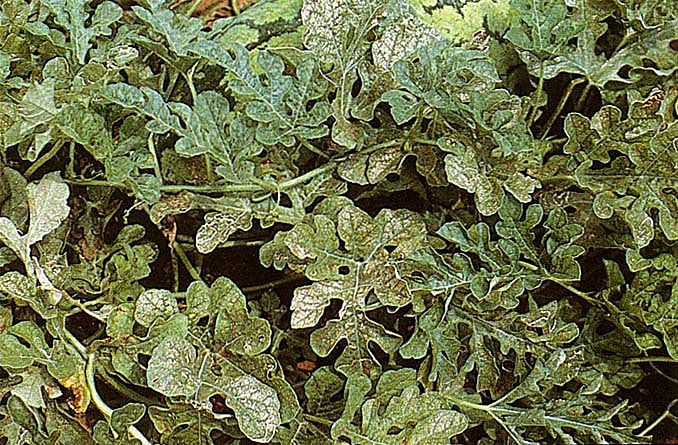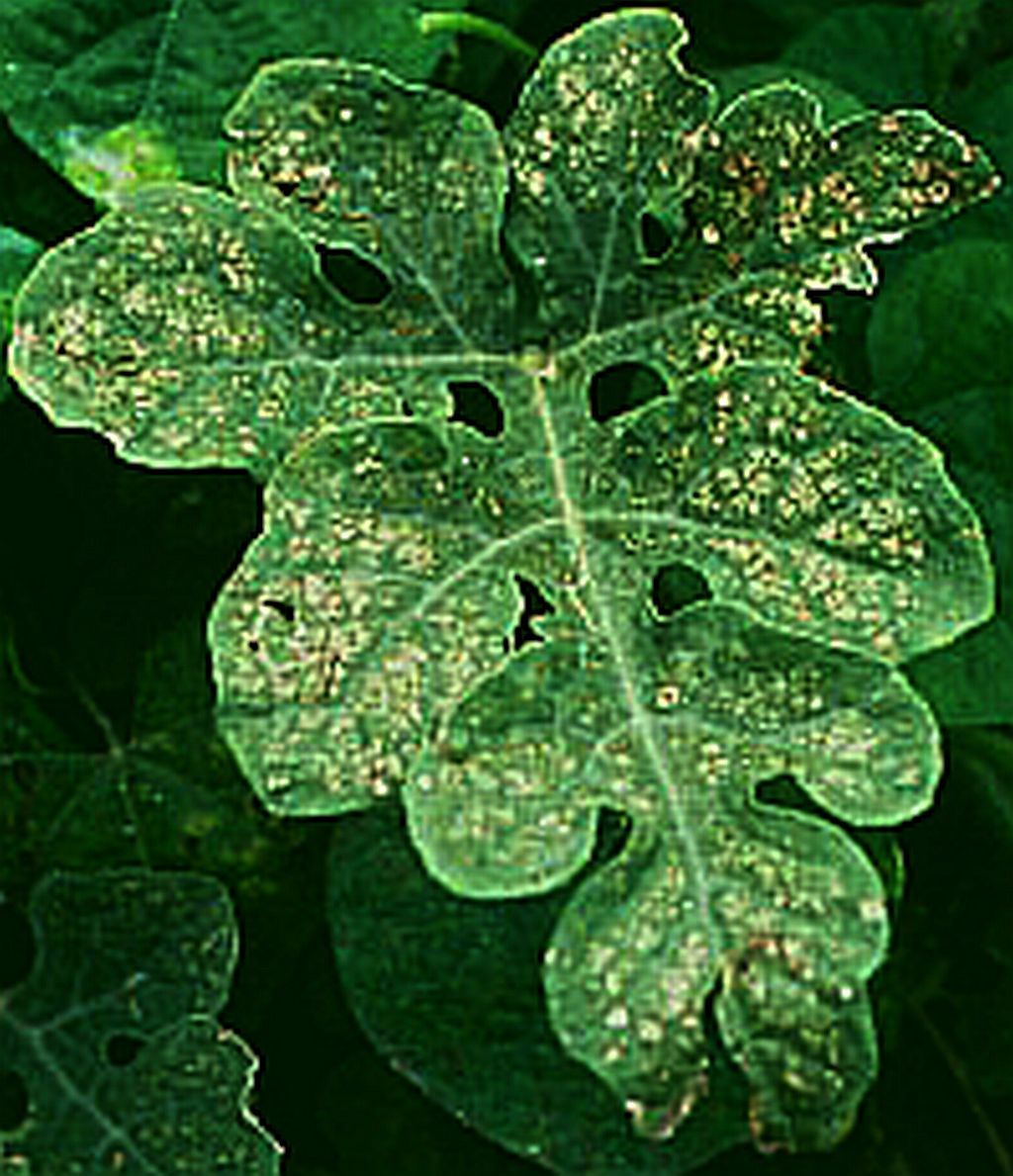News & Information
Ozone Injury on Watermelon
Air pollution can cause significant damage on watermelons (Citrullus lanatus ). In 2000 air pollution was particularly injurious to watermelons. The air pollution-induced injury on melons observed in North Carolina is principally caused by ozone. Ozone is produced in air during the daylight hours from chemicals released from automobile exhausts and the combustion of fossil fuels. During the summer months, ozone concentrations in NC can cause injury to many vegetable crops susceptible to air pollutant injury. These crops include squash,cucumbers, muskmelon, pumpkin, irish potatoes and string beans.
Diagnosis and Identification
The injury on the watermelon leaves consists of premature chlorosis (yellowing) of the upper surface of the older foliage. The foliage later becomes necrotic (brown or black), with white spotty patches within the necrotic areas. Ozone injury on muskmelon is similar, except that foliar discoloration on the upper areas goes directly from yellow to bleached white. Watermelons appear to be much more susceptible to visible injury caused by air pollution than are muskmelons. Ozone injury on watermelons generally appears in late June to early July.
The injury pattern on the foliage is initially observed on older mature leaves near the crown or center of the plant, often progressing with time to the younger, more vigorous foliage. The yellowing of the plant centers in rows of watermelons is quite distinct and can give fields a visibly striped pattern of alternating yellow and green bands. Growers often confuse this symptom with mite injury or a nutrient deficiency.
Ozone-induced foliar injury on field-grown watermelon.
Intermediate stage of ozone-induced foliar injury on field-grown watermelons (Greatest injury on mature leaves).
Melon cultivars (cultivated varieties) vary in their tolerant and susceptibility to injury caused by ozone. Seed dealers can often access information on the tolerance of a variety. Selection of a particular cultivar should be based upon many considerations, including its market acceptance, performance (growth, yield, and fruit quality) and disease resistance.
- Reference:
Decoteau, D.R., J.E. Simon, G. Eason, and R.A. Reinert. 1986. Ozone injury on field-grown watermelons. HortScience (in press).


